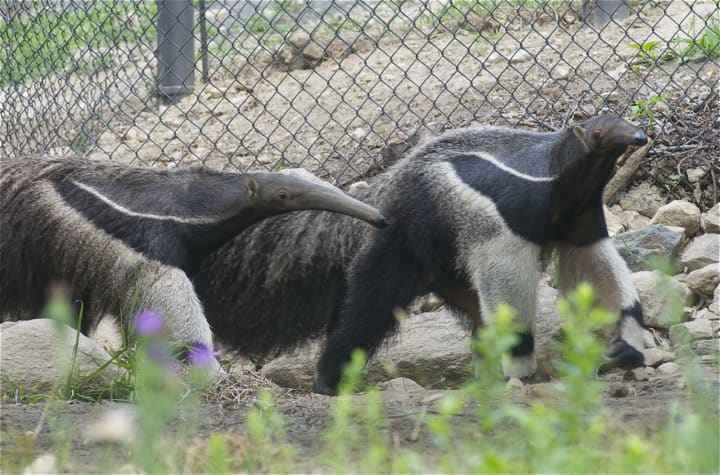The pair of Giant anteaters came to the Beardsley Zoo from the Palm Beach Zoo in Palm Beach, Fla. The female is named Pana, and the male is named EO; Both are 6 years old.
They arrived in late May to get acclimated to their new surroundings and have been kept on the zoo grounds but not on exhibit since that time.
But now visitors have a chance to see the newest animals at the Beardsley for themselves. And it may be just the perfect day trip to cap off the summer before school starts.
"There has been so much excitement and interest in our Giant anteaters, which we have not had on exhibit in 40 years," said Gregg Dancho, zoo director. "This is an incredible opportunity for our guests to see these fascinating animals up close and personal. As part of the Association of Zoos and Aquariums' Giant anteater breeding program, our fingers are crossed that the pair will have babies next year!"
In addition to Giant anteaters, the new Pampas Plains South American exhibit features four Chacoan peccaries and two Greater rhea, as well as plants and grasses native to this South American region. In 2016, the zoo will welcome Vicuña, the smallest South American relative of the camel and llama family. Vicuña have not been on exhibit in the United States for more than 20 years.
Phase one of the Pampas Plains exhibit, which consists of four separate exhibits and a new holding building, has taken just under a year to construct. A new walkway offers panoramic views as well as a glimpse into the animals' distinctive habitats. Guests will discover Pana and EO foraging for insects and will learn how different feeding adaptations, like the anteater's long snout and tongue, help animals to thrive in varied environments.
The next phase of the zoo's expansion and renovation will include a new Spider monkey exhibit, a new Andean bear exhibit, and expanding the zoo's commissary, which is where zookeepers prepare and deliver the animals' meals.
Anteaters can live up to 26 years old in captivity and are usually solitary animals. They can weigh up to 100 pounds, and are 5 to 7 feet long. Their home range is from southern Belize to northern Argentina, and they live in grasslands, humid forests, and woodland areas. They have one baby at a time with a gestation of up to 6 months.
Anteaters have one of the lowest body temperatures in the animal kingdom at 91 to 97 degrees Fahrenheit and can eat up to 30,000 ants per meal in the wild. The Latin name for anteater is Vermillingua, meaning “worm tongue,” which can be as long as 2 feet.
Click here to follow Daily Voice Stamford and receive free news updates.











